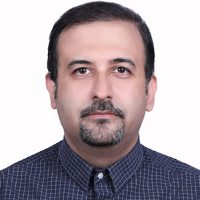Evaluating of Relative and Absolute Cumulative Input Energy Time History subjected to Forward Directivity Earthquakes
In this article, to study the effect of pulse-type near-fault earthquakes on the seismic demands of steel moment frames, 15-story 2D-frame was analyzed under the influence of 20 near-fields with forward directivity effect and 2 far-field records. The relationship between Effective Cyclic Energy, ECE and displacement demands, velocity and hysteretic curve of SDOF systems in two near- and far-fault earthquake was evaluated. Then, by examining the relative and absolute cumulative input energy history along with the kinetic energy in one section and the maximum inter-story drift for 4 different levels of nonlinear behaviour (R = 1.0, 2.0, 4.0, and 6.0) in a section, the effect of higher modes was evaluated. The study of inter-story drift profile for two near-fault earthquakes with and without visible pulse indicated the formation of maximum drift concentration, IDRmax, in the upper stories for low nonlinear degrees in record with visible pulse, which itself is an indication of its effect on higher mode contribution. However, in the pulse-free records, in addition to IDRmax intensification in the upper stories, the lower stories also have large structural demands. In other words, in these records, in the lower stories, mainly the dynamic instability is involved.
-
Feasibility study of using concrete veneer in semi-supported steel shear wall at the edges
Sina Momeni, *, Alireza Jahanpour
Quranic Knowledge Research, -
Numerical study on semi-supported steel composite shear wall at the edges under near and far-fault loading
S. Momeni, N. Siahpolo *, A.R. Jahanpour
Sharif Journal Civil Engineering,



